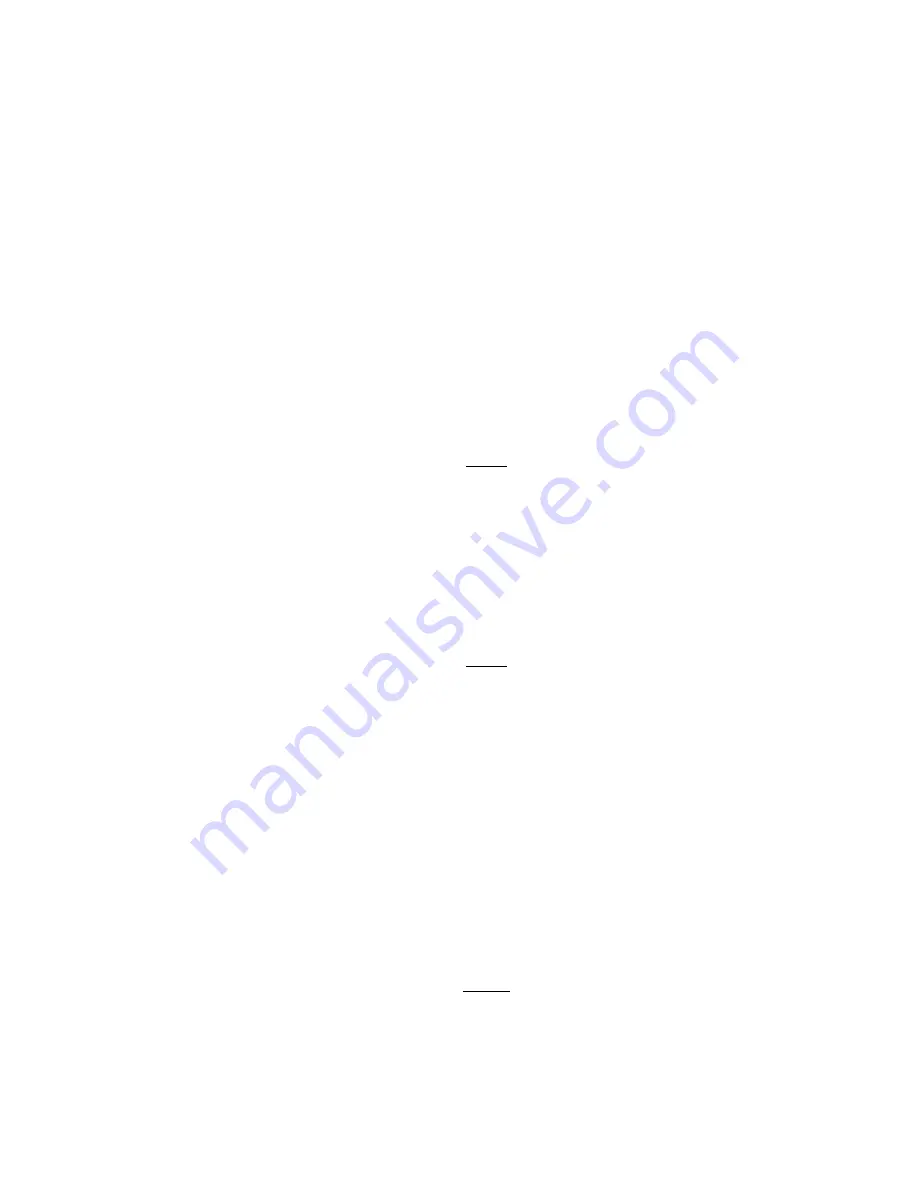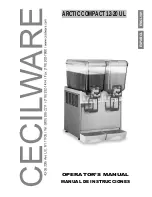
3
established for that equipment.
2. Cleaning and sanitizing should be accomplished only by trained personnel. Sanitary gloves
are to be used during cleaning and sanitizing operations. Applicable safety precautions
must be observed. Instruction warnings on the product being used must be followed.
3. Water lines are not to be disconnected during the cleaning and sanitizing of syrup lines to
avoid contamination.
4. Do NOT use strong bleaches or detergents. They tend to discolor and/or corrode various
materials.
5. Do NOT use metal scrapers, sharp objects, steel wool, scouring pads, abrasives, solvents,
etc., on the dispenser.
6. Do NOT use hot water above 140°F (60°C). This may damage certain materials.
B. REQUIRED CLEANING EQUIPMENT
1. Cleansers (for example, Ivory Liquid, Calgon, etc.) mixed with clean, potable water at a
temperature of 90 to 110 degrees Fahrenheit should be used to clean equipment. The
mixture ratio, using Ivory Liquid, is one (1) ounce of cleanser to two (2) gallons of water. A
minimum of five (5) gallons of cleaning mixture should be prepared. Any equivalent
cleanser may be used as long as it provides a caustic based, non-perfumed, easily rinsed
mixture containing at least two (2) percent sodium hydroxide (NaOH). Rinsing must be
thorough and use clean, potable water which is also at a temperature of 90° to 110°F.
NOTE
Extended lengths of product lines may require that an additional volume of cleaning
solution be prepared.
2. Sanitizing solutions should be prepared in accordance with the manufacturer’s written
recommendations and safety guidelines. The solution must provide 200 parts per million
(PPM) available chlorine. A minimum of five (5) gallons of sanitizing solution should be
prepared. Any sanitizing solution may be used as long as it is prepared in accordance with
the manufacturer’s written recommendations and safety guidelines, and provides 200 parts
per million (PPM) available chlorine. Sanitizing solution is to be purged from line(s) and
equipment by flushing with product only until there is no after taste.
Do not rinse with water.
NOTE
Please note that a fresh water rinse cannot follow sanitization of equipment. Purge only
with the end use product until there is no after taste in the product.
This is an
NSF requirement.
Extended lengths of product lines may require that an additional volume of sanitizing
solution be prepared.
3. Other:
a. Clean cloth towels.
b. Bucket.
c. Small brush.
d. Extra nozzle.
e. Sanitary gloves.
2.2
PERIODIC MAINTENANCE, CHECKLIST AND CLEANING GUIDE
A. CLEANING AND SANITIZING THE LANCER MB-18
1. CLEANING PROCEDURE
NOTE:
This procedure should be accomplished on a daily basis, or more often (if required).
a. Carefully remove the nozzle housings by turning counter-clockwise and pulling down
from the nozzle body.
b. Wash the nozzle housings in warm soapy water.
c. Wet a clean cloth in warm soapy water.






























